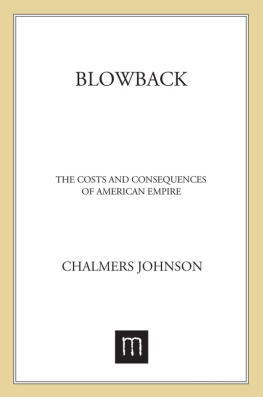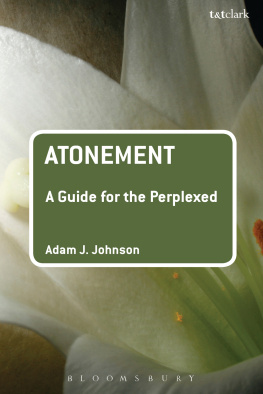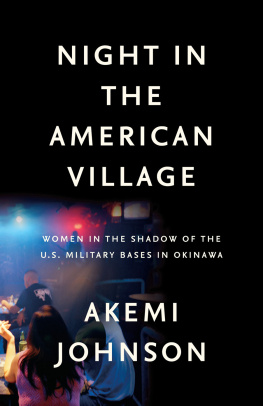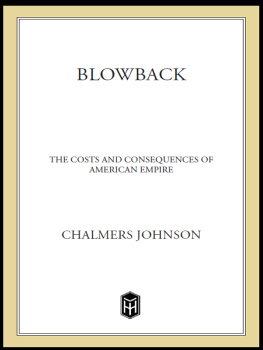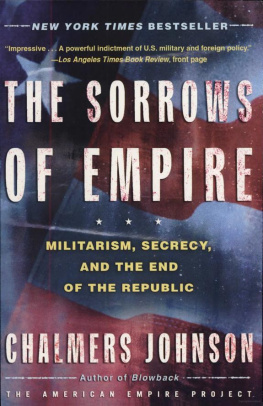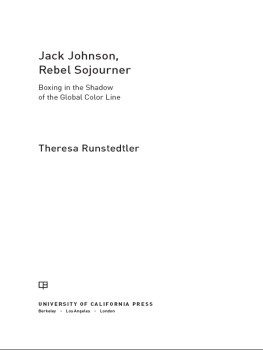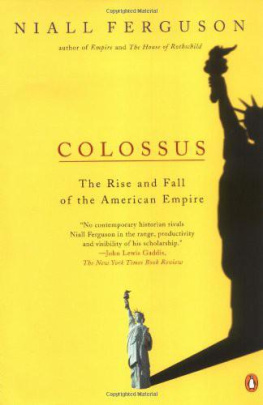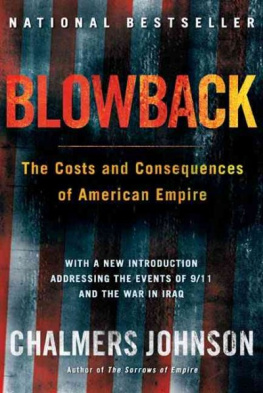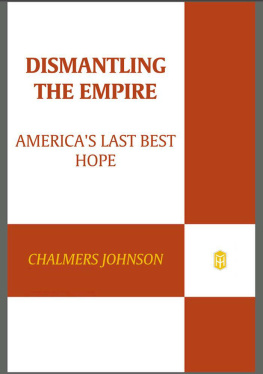After a lifetime spent writing academic books, I have tried to keep the notes in this one to a minimum in the hope of offering the nonexpert a provocative rather than a pedantic experience. Quotations are cited in the notes, but I believe it might be more useful with regard to general references to offer an annotated list of books, articles, and Internet sites that strike me as particularly helpful and relevant for further reading. These I have grouped under subject headings.
Arms Sales
Greider, William. Fortress America: The American Military and the Consequences of Peace . New York: Public Affairs, 1998.
A short but powerful introduction to the economic implications of Americas massive military apparatus and the interests of the arms industry.
Shear, Jeff. The Keys to the Kingdom: The FS-X Deal and the Selling of Americas Future to Japan . New York: Doubleday, 1994.
A brilliant expose of the little state department in the Pentagon and how and why it transferred the technology of Americas best fighter aircraft to Japan and got nothing in return.
Tirman, John. Spoils of War: The Human Cost of Americas Arms Trade . New York: Free Press, 1997.
If you read no other book on Americas arms trade, read this one. Tirmans treatment of the U.S. stake in Turkeys white genocide against the Kurds is the best available.
Aspects of American Imperialism
Arrighi, Giovanni. The Long Twentieth Century . London: Verso, 1994. Paperbound.
A masterful treatment of the transfer of hegemony from Britain to the United States. Brilliant on the dialectic of market and plan as the leitmotif of the twentieth century.
Aron, Raymond. The Imperial Republic: The United States and the World , 1945-1973. Englewood Cliffs, N.J.: Prentice-Hall, 1974.
A classic defense of American Cold War policy in Europe by an independent French intellectual. Aron gets it right about Europe but has not a clue to American behavior in postwar East Asia.
Cumings, Bruce. Parallax Visions: Making Sense of American-East Asian Relations at the End of the Century . Durham, N.C.: Duke University Press, 1999.
Important essays by the countrys leading historian of modern Korea. Cumingss chapters on North Koreas nuclear program, area studies during and after the Cold War, and American hegemony in East Asia are indispensable.
Engelhardt, Tom. The End of Victory Culture: Cold War America and the Disillusioning of a Generation . New York: Basic Books, 1995. Paperbound.
The best guide to the ideology of American good intentions in the world, regardless of costs, and what happened to this ideology after the Vietnam War. Greene, Graham. The Quiet American . New York: Bantam Books, 1957. Paperbound.
Greene is unsurpassed on Americans as imperialists, impregnably armoured by good intentions and ignorance.
Hatcher, Patrick Lloyd. The Suicide of an Elite: American Internationalists and Vietnam . Stanford: Stanford University Press, 1990.
An insider discusses how the loss of the war in Vietnam was not an accident or the result of a conspiracy but the normal workings of the Cold War national security apparatus.
Lowen, Rebecca S. Creating the Cold War University: The Transformation of Stanford . Berkeley: University of California Press, 1997.
Why President Eisenhowers epithet the military-industrial complex must be amended to the military-industrial-university complex and the blowback from lost intellectual integrity that awaits American institutions of higher learning.
China
Cohen, Warren I. Americas Response to China: A History of Sino-American Relations . New York: Columbia University Press, 1990. Paperbound.
The best short history of Americas relations with China from the Opium War to the present.
http://www.huaren.org/
The Web site of Huaren, an indispensable source of information on overseas Chinese and a compilation of worldwide articles on attacks against people of Chinese ancestry.
Li, Cheng. Rediscovering China: Dynamics and Dilemmas of Reform . Lanham, Md.: Rowman & Littlefield, 1997. Paperbound.
The most insightful analysis available, put in personal terms, of the meaning of reform in China and why it is anything but threatening to the United States.
Mann, James. About Face: A History of Americas Curious Relationship with China , from Nixon to Clinton. New York: Knopf, 1999.
A Los Angeles Times former Beijing correspondent offers new information and insights into official American thinking on China, from Nixon and Kissinger through the Tiananmen repression and down to Clintons inconsistent efforts.
McBeath, Gerald A. Wealth and Freedom: Taiwans New Political Economy . Aldershot, England: Ashgate, 1998.
Comprehensive analysis of Taiwan today, including its state-owned enterprises, democracy, and foreign policy after the loss in 1971 of its seat in the United Nations.
Nathan, Andrew J., and Robert S. Ross. The Great Wall and the Empty Fortress: Chinas Search for Security . New York: W. W. Norton, 1997.
An analysis by two writers who have studied China about why it is not a threat to other countries but often appears to be.
Economic Meltdown and How to Analyze It
The Asian Crisis. Special issue of Cambridge Journal of Economics , vol. 22, no. 6 (November 1998).
A collection of essays on the causes and consequences of the globalization crisis that started in East Asia in 1997. Not the usual Washington consensus.
Fingleton, Eamonn. In Praise of Hard Industries: Why Manufacturing, Not the Information Economy , Is the Key to Future Prosperity . Boston: Houghton Mifflin, 1999.
A seasoned observer of the Japanese economy explains why it is not in the deep trouble that American theorists and triumphalists say it is.
Gray, John. False Dawn: The Delusions of Global Capitalism . New York: New Press, 1999.
A historian demonstrates that global, unregulated markets are inherently unstable. Americas experiment in imperial laissez-faire was the geopolitical expression of a Wall Street bubble.
Greider, William. One World, Ready or Not: The Manic Logic of Global Capitalism . New York: Simon & Schuster, 1997.

